In our daily work and life, our eyes play an indispensable role. Especially in some occupational environments, the eyes may be exposed to a variety of potential risks, so it is crucial to choose the right safety glasses for you. However, there are many factors to consider in order to properly select and use safety glasses, such as the material and color of the lenses, the frame design, the choice of accessories, and the relevant logos and certifications. In this article, we will discuss in depth how to purchase and use safety glasses, and provide practical suggestions to solve some common problems, to help you protect your eyesight at work and improve work efficiency.
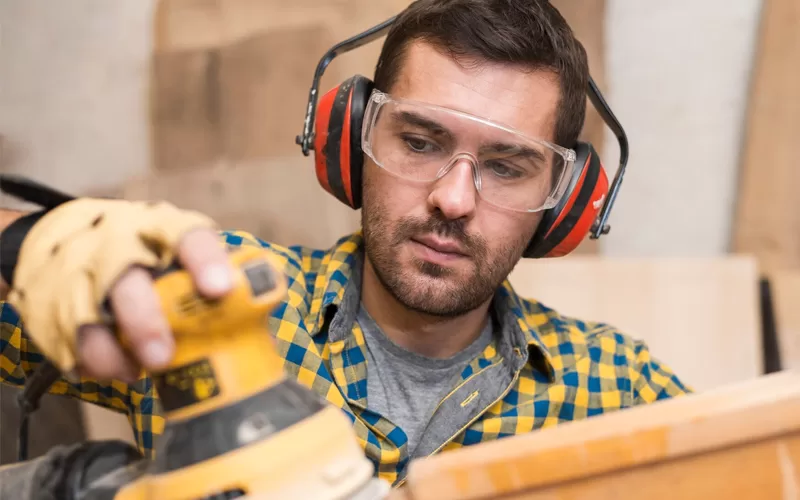
1. Safety Glasses Key Features
When selecting the best safety glasses for your work environment and use cases, always consider the following factors, combining these factors with the key features of safety glasses to ensure effective eye protection for employees:
1. Durable Materials
Prioritize safety glasses made from high-strength, impact-resistant materials such as polycarbonate, polystyrene, or polyurethane. These materials offer excellent impact resistance while remaining lightweight and comfortable, making them ideal for industrial applications, laboratories, construction sites, or high-risk industrial environments. Ensure employees feel comfortable during extended wear. Additionally, lenses with scratch-resistant coatings prolong the lifespan and maintain a clear field of vision.
2. Chemical Resistance or Splash Protection
In environments with chemical hazards, choose safety glasses with chemical protection features. For cleanrooms, opt for glasses with splash protection, ensuring employees’ eyes are shielded from splashes or spills. Provide additional durability to ensure the longevity and safety of protective eyewear.
3. Fog and Coating
Due to work conditions, seek safety glasses with anti-fog and anti-scratch coatings to ensure a clear field of vision and prevent fogging in adverse conditions. These coatings help employees stay focused on tasks while protecting their eyes from harmful UV radiation.
- Anti-Fog Coating: Effectively prevents lens fogging in humid environments, crucial for maintaining clear vision in challenging conditions, enhancing work efficiency, and safety.
- Anti-Scratch Coating: Surface treatment increasing lens scratch resistance, extending usability. Particularly useful in work environments with particles or potential abrasions, ensuring lens clarity and overall visual quality.
- UV Protection: Vital for shielding eyes from harmful UV radiation, especially in outdoor or intensely sunny environments. Choosing safety glasses with UV protection reduces the risk of eye damage.
4. Comfort and Fit
Select frames with ergonomic designs to ensure comfortable wear. Well-fitting frames enhance comfort by ensuring a snug fit to the face, minimizing discomfort. Adjustable nose pads and temple arms accommodate individual differences, enhancing wear comfort. Lightweight design aids in prolonged comfort during extended work periods. Consider comfort features such as foam or cushioning for improved wear comfort.
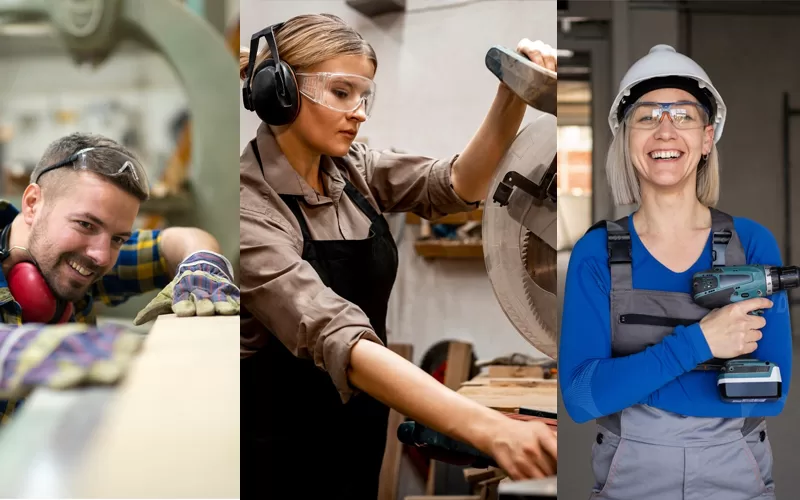
2. Understanding Safety Glasses for Various Work Environments
1. Industrial Manufacturing and Construction Sites
These environments often involve splashes, particles, and other mechanical hazards. Therefore, safety glasses chosen for such work should have high strength, impact resistance, protective features, and consider designs with full or side enclosures, scratch-resistant, and anti-fog coatings to ensure eyes are protected from potential risks.
2. Laboratories or Medical Environments
Working with experiments or handling chemicals poses potential risks, requiring safety glasses resistant to chemical splashes. These glasses use special materials to resist chemical corrosion, ensuring eye protection. In medical settings, especially in operating rooms and laboratories, healthcare professionals need safety glasses that provide both eye protection and clarity, ensuring clear visibility and comfort during procedures.
3. Woodworking and Metalworking
Industries involving woodworking and metalworking often face hazards like wood chips and metal particles. These particles can pose potential threats to the eyes during work processes. Therefore, safety glasses selected for such environments must have high strength and impact resistance to prevent direct harm to the eyes from external objects. Transparent lens design ensures workers can see work details clearly, providing necessary protection.
4. Food Processing and Kitchen Environments
In food processing and kitchen settings, odors, splashes, and impurities are common. Specialized safety glasses are needed to protect eyes from splashes and contact with food materials. These glasses are designed to be easily cleaned and disinfected to meet hygiene standards. Easy cleaning is essential to maintain high standards of hygiene, ensuring long-term safety and reliability of the glasses.
5. Electrical or Electronic Work Environments
Eye protection is crucial in high-risk jobs such as electrical work to prevent damage from arc flashes and other electrical hazards. Choosing safety glasses compliant with relevant electrical safety standards is essential. These glasses help prevent light and splashes from harming the eyes, providing safety for workers in high-risk environments.
6. High-Temperature and Welding Environments
In metalworking, molten metal operations, glasses manufacturing, casting, construction, and welding, workers may encounter high temperatures and flames. In such industrial processes involving high temperatures, workers need appropriate eye protection to safeguard against sparks, intense light radiation, and splatter. Wearing suitable protective eyewear is crucial to prevent damage to the eyes in these environments.

3.Standards for Choosing Safety Glasses
When selecting safety glasses, we can refer to the following common safety standards, typically used to ensure effective eye protection:
1.ANSI Z87.1 (American National Standards Institute)
This is a common safety glasses standard in the United States. Safety glasses that comply with this standard are usually marked with “Z87” or “Z87+,” indicating adherence to the ANSI Z87.1 standard.
2.EN166 (European Standard)
In Europe, EN166 is the standard for eye and face protection devices. Safety glasses that conform to the EN166 standard generally bear the CE marking, signifying compliance with requirements of the European Economic Area. When purchasing safety glasses, it’s essential to check for the CE marking on the product. The presence of the CE marking indicates that the product has passed necessary assessment and testing procedures, aligning with European safety and performance standards. It’s worth noting that the CE marking applies not only to safety glasses but also to other types of personal protective equipment and industrial products.
3.CSA Z94.3 (Canadian Standards Association)
Canada uses the CSA Z94.3 standard to regulate personal protective equipment, including eye and face protection devices.
4.AS/NZS 1337 (Australia and New Zealand Standard)
Applicable to the Australia and New Zealand regions, AS/NZS 1337 sets standards for personal protective equipment, including eye and face protection devices.
5.GB 14866 (Chinese Standard)
China’s national standards include specifications for eye protection devices, which can be referenced through GB 14866.
6.DIN EN 166 (German Standard)
EN 166, published by the German Institute for Standardization (DIN), is the European standard for eye and face protection devices.
7.ANSI/ISEA Z87.1+
ANSI/ISEA Z87.1+ is an updated version of the ANSI Z87.1 standard, incorporating additional requirements and testing methods.
8.ISO 12312-1 (International Standard for Sunglasses)
If you require safety glasses with sun protection features, you can refer to ISO 12312-1, which outlines performance requirements for sunglasses.
It’s important to note that whether you are purchasing glasses locally or online, different countries and regions may have their own safety standards and regulations. When selecting safety glasses, it’s advisable to consult local safety standards and ensure that the chosen glasses comply with applicable standards. Additionally, specific industries and work environments may have additional requirements for standards, so in special cases, it may be necessary to understand more specific standard requirements.
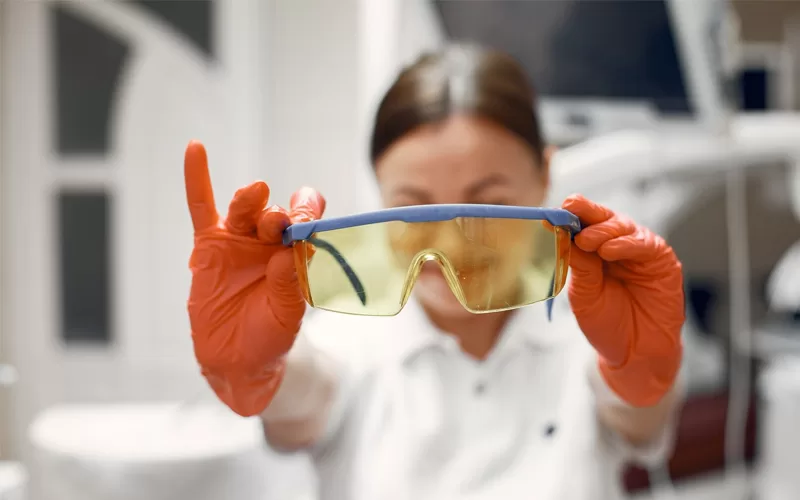
4.How to Choose Lens Materials for Safety Glasses
When you are unsure about how to choose the lens material for safety glasses, it is recommended to consider the following aspects:
1.Impact Resistance
If your work environment involves potential hazards such as splashes or object impacts, it is advisable to choose lenses made of polycarbonate material. Polycarbonate lenses are lightweight and provide excellent impact resistance.
2.Chemical Protection
If your work involves contact with chemicals, lenses made of polyether sulfone material can be a suitable choice. They have a certain resistance to chemical corrosion.
3.Transparency and Comfort
Glass lenses have high transparency but lack the impact resistance of polycarbonate. Consider whether high transparency is needed and also factor in the comfort of the lenses when making your choice.
4.Special Features
If fogging is a common issue in your work, consider lenses with anti-fog coatings.For anti-static requirements, choose lenses with appropriate coatings.
In summary, choose the lens material based on your work environment and requirements, ensuring it complies with the relevant safety standards. The most important aspect is to ensure that the glasses provide sufficient protection during work while maintaining comfort.
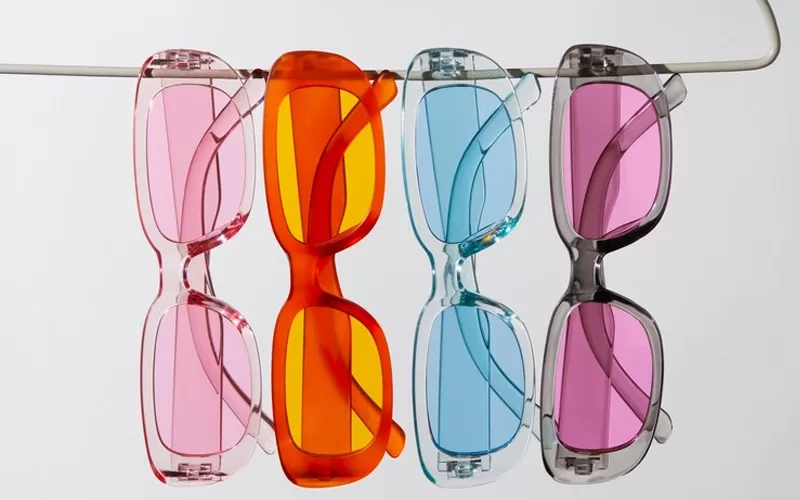
5.How to Choose the Color of Safety Glasses Lenses
When choosing the color of safety glasses lenses, similar to the method of selecting lens materials, it is based on your usage environment. Consider the following content to choose a color that suits your needs and provides a different visual experience.
1.Clear/Colorless Lenses
Suitable for general indoor work, providing basic eye protection without altering color perception.Ideal for office work, assembly, and inspection where accurate color judgment is necessary.
2.Gray Lenses
Suitable for outdoor work such as construction sites, agriculture, and mining.Reduces light intensity and relieves glare.Helpful for reducing sunlight glare while driving, enhancing comfort and safety.Filters excess light in bright environments, maintaining a clear field of vision.Suitable for extended outdoor activities like hiking, cycling, and fishing.
3.Brown/Amber Lenses
Enhances object contrast and is suitable for outdoor activities like driving or fishing.Improves visibility of object contours.
4.Yellow/Orange Lenses
Suitable for low-light conditions, enhancing contrast and reducing glare.Ideal for dusk, overcast days, and provides improved clarity.Suitable for nighttime driving, shooting activities, hiking, cycling, and fishing.
5.Green Lenses
Effectively reduces glare and provides a comfortable visual experience.Suitable for outdoor work in fields like construction, farming, and gardening.Filters excess light in bright environments, enhancing clarity.Suitable for outdoor activities like hiking, cycling, and skiing.
6.Blue Lenses
Similar to green lenses, reduces glare in bright outdoor work conditions.Versatile for various work and activities, including reducing screen glare in the electronics industry and improving accuracy in fluorescence testing.Provides specific visual protection for different work and activities.
When choosing the color of safety glasses lenses, consider the lighting conditions and contrast requirements of your work environment. Ensure that your eyes receive sufficient protection. Additionally, some lenses have special features such as UV protection or blue light blocking, which can be chosen based on individual needs.
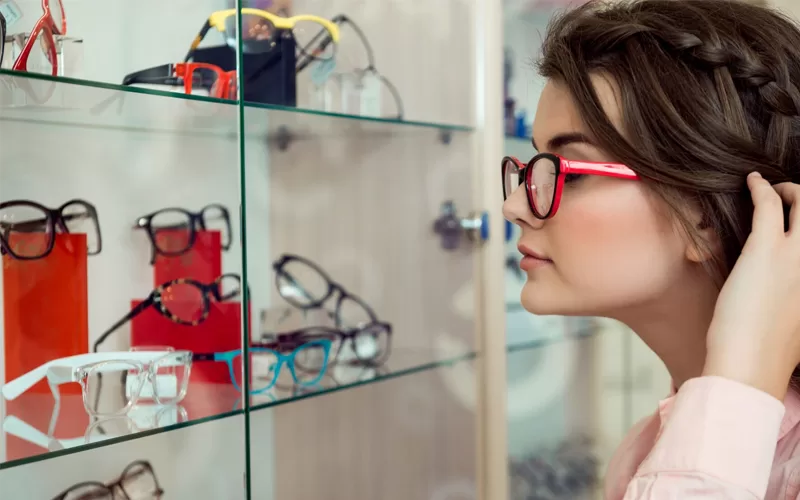
6.How to Design Safety Glasses Frames?
When choosing the design of safety glasses frames, several factors need to be considered to ensure that the frames meet the requirements of the work environment and provide effective protection. Here are key factors to consider when choosing the design of safety glasses frames:
1.Material Durability
Choose sturdy and durable materials such as reinforced plastic or metal alloys to ensure that the frames can withstand impact and pressure.
2.Lightweight Design
Prefer a lightweight design to reduce the wearer’s burden, allowing for comfortable long-term wear.
3.Adjustability
Frames should provide adjustable nose pads and temples to accommodate different face shapes and head sizes, ensuring stability and comfort.
4.Ventilation Design
Frames should have ventilation holes or channels to prevent fogging during intense activities, maintaining a clear field of vision.
5.Anti-Slip Features
Earpieces and nose pads of the frames should have anti-slip designs to prevent glasses from slipping during movement or in wet conditions.
6.Convenient Lens Replacement
Frame design should facilitate the easy replacement of different types of lenses to adapt to various work environments, such as clear, protective, anti-UV, etc.
7.Compliance with Standards
Ensure that the frame design complies with relevant safety standards and regulations to guarantee the safety and effectiveness of the glasses.
8.Comfort
The frame design should prioritize the wearer’s comfort, avoiding uncomfortable pressure points or friction.
9.Appearance Design
While safety is a primary consideration, the appearance design of the frames should also receive moderate attention to make the wearer more willing to wear the glasses.
By comprehensively considering these factors, you can choose a suitable design for safety glasses frames to ensure effective protection and comfort in various work environments.

7.How to Choose Safety Glasses Accessories
When choosing safety glasses accessories, it’s essential to consider multiple factors to ensure they provide effective protection and enhance wearer comfort. Here are key factors to consider when choosing safety glasses accessories:
1.Protective Performance
Accessories should offer additional protection, such as side shields, protective side covers, etc., to prevent foreign objects or chemicals from entering the eyes from the sides.
2.Adjustability
Choose accessories with adjustable features, such as adjustable headbands or clips, to accommodate different head sizes and shapes, enhancing wearing comfort.
3.Anti-Slip Design
Contact parts of the accessories should have anti-slip designs to prevent them from slipping during movement or in wet conditions, ensuring the stability of the glasses.
4.Ventilation Performance
The design of accessories should contribute to the ventilation of the glasses to prevent fogging during intense activities and maintain a clear field of vision.
5.Replaceability
Ensure that accessories are easy to replace to adapt to different work environments and needs, such as replacing different types of shields or protective lenses.
6.Material Durability
The material of accessories should be durable and easy to clean, ensuring a long lifespan and maintaining good hygiene.
7.Compliance with Standards
Make sure the selected accessories comply with relevant safety standards and regulations to ensure their protective performance and safety.
8.Comfort
The design of accessories should prioritize wearer comfort, avoiding excessive pressure or friction.
9.Adaptability to Different Models of Glasses
Ensure that accessories can adapt to different models of safety glasses, providing a broader range of choices.
By carefully considering these factors, you can choose safety glasses accessories that are suitable for specific work environments and requirements, providing comprehensive eye protection and comfort.
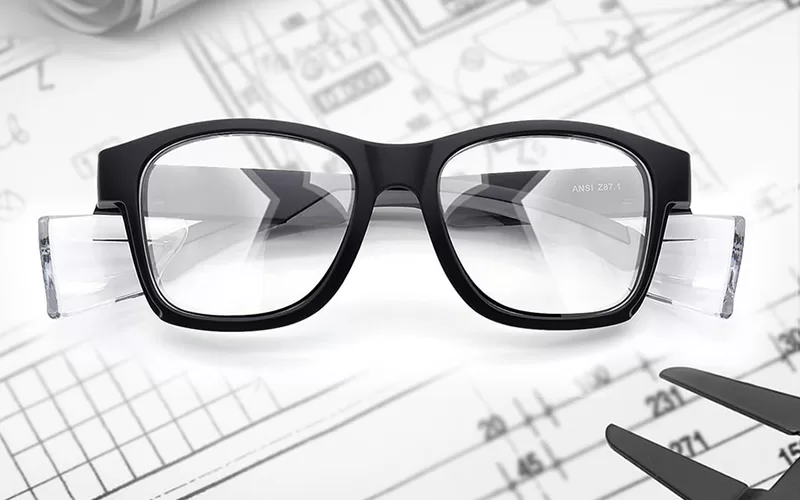
8.How to Check Safety Glasses Markings and Certification
Once you’ve decided on the style of safety glasses to purchase, you can check the markings and certification in the following places:
1.Inspect Markings on the Frame
Safety glasses typically have markings on the frame, containing manufacturer information, model numbers, and certification symbols. Carefully check the inside, outside, or nose bridge of the frame.
2.Look for Certification Symbols
There should be certification symbols on the frame of safety glasses, indicating compliance with international or national safety standards. For example, ANSI standards in the United States, the CE mark in Europe, etc. Certification symbols are usually represented in symbols or text.
3.Examine the Lenses
Some information may be engraved or printed on the lenses. Check the edges or bottom of the lenses for manufacturer information, material specifications, and other relevant markings.
4.Refer to the User Manual
If your purchase includes a user manual for the safety glasses, you can find information about markings and certification in the manual. Manufacturers often provide detailed product information in the manual.
5.Visit the Manufacturer’s Website
Visit the official website of the safety glasses manufacturer to find information about product certification and markings. On the manufacturer’s website, you may find detailed explanations of product certification, testing standards, and other relevant information.
6.Consult the Retailer
If you purchase safety glasses from a specialized safety eyewear retailer, the salesperson may provide detailed information about product markings and certification. They are usually trained and knowledgeable about the products they sell.
After going through the above information, you now know where to check for markings and certifications on safety glasses to ensure they meet authoritative standards and provide effective eye protection in the workplace.
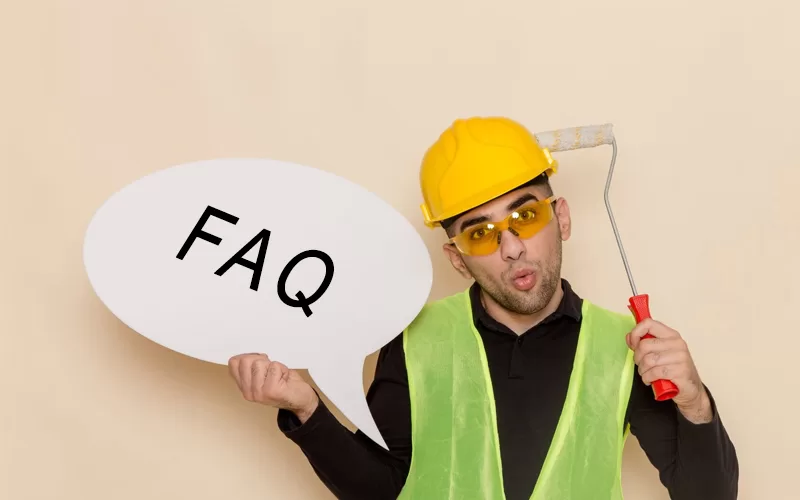
9.Common Issues with Safety Glasses
When using safety glasses, you may encounter some common problems. The following are common issues with safety glasses and simple solutions. If you experience any of these situations, you can refer to the suggested solutions for resolution.
1. Fogging of Glasses
(1)Issue: Safety glasses may fog up in environments with significant temperature differences, especially if the anti-fog effect of the lenses diminishes over time, severely impacting clear vision.
(2)Solution: Use high-quality anti-fog safety glasses from reputable brands such as 3M, Uvex, Honeywell, Bolle Safety, and Gateway Safety. Alternatively, you can consider choosing our anti-fog glasses, which provide anti-fog effects for at least a year under correct usage. If cost is a concern, you can try using anti-fog sprays. Also, ensure that the purchased glasses have good ventilation, a crucial factor in preventing lens fogging.
2. Scratching of Glasses
(1)Issue: The lenses of general safety glasses are made of transparent PC, and scratches usually occur only when hard objects come into contact. If scratches appear on the lenses, timely replacement is necessary as it affects visual clarity.
(2)Solution: Avoid using hard objects to wipe the lenses. When cleaning the lenses, use eyeglass cleaning solution and a soft cloth.
3. Discomfort During Wear
(1)Issue: Poorly designed frames may cause discomfort, pressing against the ears or nose, and can even affect the overall visual experience.
(2)Solution: Consult with eyeglass store or online sales personnel. If the glasses are unused, choose frames that suit your face shape and are adjustable. If the glasses have been used, inquire about the possibility of returning them for replacement.
4. Frequent Slippage
(1)Issue: Frequent automatic slipping of glasses during work can impact efficiency.
(2)Solution: Choose glasses that fit your head shape, consider adjustable safety glasses, or explore alternative ways of wearing them.
5. Protection Performance Issues
(1)Issue: Safety glasses fail to provide sufficient protection, making them inadequate for job requirements.
(2)Solution: Ensure that you choose safety glasses that comply with standards, selecting the appropriate type based on the work environment, such as those with side protection, wraparound design, and sealed protection. When purchasing, consider your specific work environment.
6. Easily Damaged Accessories
(1)Issue: Accessories such as elastic bands, protective sponge pads, side shields, nose pads, or temple arms are prone to damage.
(2)Solution: Regularly inspect accessories and promptly replace any damaged parts.
These are common issues encountered during the everyday use of safety glasses. Therefore, if you face any of these situations, you can follow the suggested solutions for resolution.
Conclude
Protecting our eyes is a very important thing in our daily work. Choosing the right safety glasses for your work environment and needs is as important as buying the right shoes. It is important to consider the lens material, color, frame design, accessories and certification marks to make sure that the eyewear not only protects your eyes but also feels comfortable. Sometimes we may experience problems such as fogging, scratches and uncomfortable wearing of glasses, but these can be solved by purchasing good glasses, using them properly and checking and maintaining them frequently. Overall, choosing, using and maintaining good safety eyewear is a critical step in protecting your vision, improving your productivity and reducing risk.